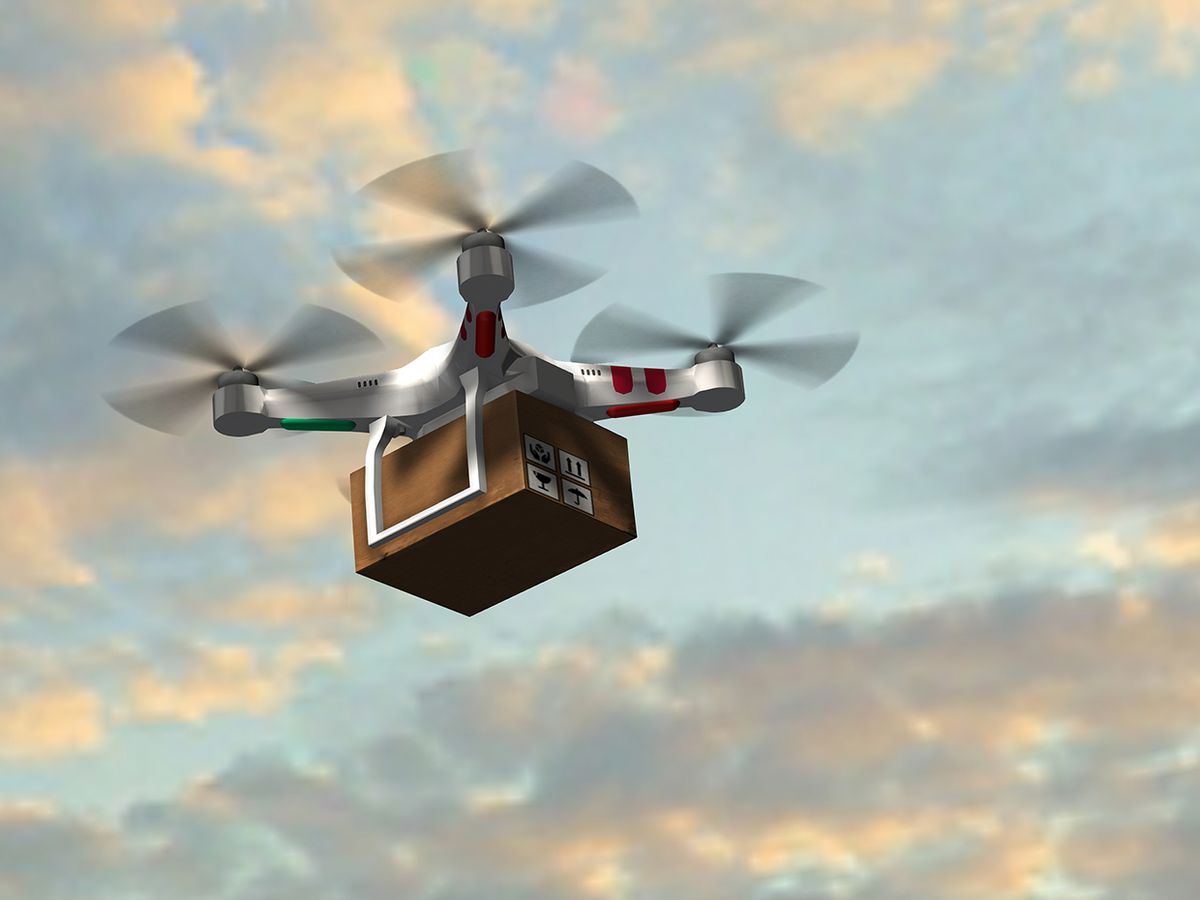Drone delivery is expected to take off big time in the next few years. Chinese online retailer JD.com has already launched drone delivery in four provinces in China, while DHL and Zipline are delivering medicines with drones in rural and hard-to-reach areas. Amazon, Google, and UPS are all working on getting drone delivery service off the ground.
There are a lot of issues to think about when it comes to package delivery using drones—safety, privacy, and logistics being some of the main concerns. In a new study, researchers tackle two other important aspects: energy use and greenhouse gas emissions.
Drones could use less energy and spew fewer emissions into the air than trucks, researchers say. But that advantage diminishes as drones get bigger and use dirty electricity to recharge.
“If you’re delivering a phone or sunglasses, drones would be a good way to go anywhere in the U.S. or most of world,” says Joshua Stolaroff, an environmental scientist at Lawrence Livermore National Laboratory who led the study published in Nature Communications. “But a larger drone carrying a bag of groceries can lead to higher emissions in a lot of the country with the current electricity grid,” says Stolaroff
To make drone delivery truly green, regulators and retailers will have to limit the size of drones and the number of new warehouses that support them, Stolaroff and his colleagues say.
Battery-powered drones will presumably replace large diesel-guzzling trucks to cover the last few miles from warehouses to homes and offices.“Initially I thought it’s a terrible idea,” Stolaroff says. Truck shipping is four times as carbon-intensive as rail, while overnight air is 10 times worse. “So I thought the faster you deliver a package the more energy you’re going to take,” he says.
But it’s not that simple. The researchers found that when they modeled energy use and greenhouse gas emissions for drones versus trucks, many factors come into play. Among them, the drone’s energy-efficiency, the source of electricity used to charge it, the size of the drone and the packages, and delivery logistics. A massive truck burns a lot of fuel but carries hundreds of packages on a fixed route, stopping to deliver a package so often, whereas a drone dropping off a package at a time flies much farther per parcel.
The big surprise? Much of the energy impact of drones comes from the local warehouses that companies will have to build for on-demand delivery. Amazon, for example, has promised delivery time of 30 minutes from time of purchase. The researchers estimate that about four urban warehouses would be needed to provide drone delivery service to the city of San Francisco, Calif., with drones capable of a 3.5-kilometer range; 112 warehouses would be needed to serve the entire San Francisco Bay Area.
The researchers compare emissions from a medium-duty truck carrying a package from a regional warehouse, and a drone carrying a package from a local urban warehouse to a destination. A small quadcopter drone carrying up to 0.5 kg would have lower emissions than a truck, they found. A large octocopter type drone carrying up to 8 kg—say, computers or groceries—would generate 50 percent more emissions than a truck in regions where electricity comes from fossil fuels. But in a low-carbon electricity market like in California, large drones would still be responsible for 9-percent less carbon emissions than delivery trucks.
“Drones are not really loved by the public yet,” Stolaroff says. Smart decisions about how they are deployed, including making them more environmentally friendly, could help to improve their credibility.
The best way to limit emissions would be to charge drones’ batteries using low-carbon electricity, he adds. Companies could also decide not build more warehouses, opting to use existing retail space for storage. And regulators could limit the size of drones for this application.
“Package delivery by drone is an unusual case where we have the opportunity to consider the impacts of the technology before it gets deployed,” says Stolaroff.
Prachi Patel is a freelance journalist based in Pittsburgh. She writes about energy, biotechnology, materials science, nanotechnology, and computing.



